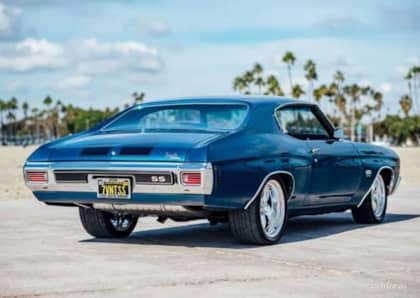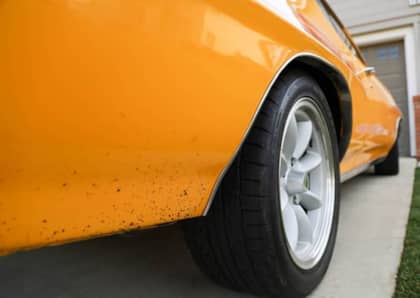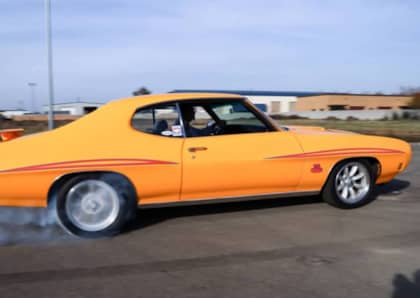Installing Plus-Sized Wheels for Better Handling: The Pros and Cons Versus Stock Wheels
Bigger wheels are often portrayed as a status symbol, a way to show off extroverted styling on almost any vehicle you can think of. Done right, however, a larger diameter wheel and tire setup can make a startling difference in both the performance and the character of your car. In most cases, the improvements are well worth any perceived downsides that might come with pushing your wheel size up a couple of inches.

Here's a look at the pros and cons of installing larger wheels and ties.
Advantages Of Larger Wheels
The two main reasons to upgrade to a larger set of wheels are to update the style of your vehicle, and improve performance.

Some cars and trucks just look better with a set of larger-diameter wheels installed, especially those built over the past 15 years or so during the period when designers began to embrace larger wheel wells intended to be stuffed with the heftiest rollers imaginable. Stepping up to a set of rims that offer one or two inches of additional diameter is a very popular esthetic choice on the aftermarket.

Beyond looks, however, there are some very real performance benefits that come with choosing a larger wheel. Larger wheels often allow you to run a wider tire, which increases the traction footprint at each of the vehicle's four corners. With more rubber making contact with the road, you have additional grip available for acceleration, but even more important is the extra purchase that rubber provides when braking or turning a corner.

In addition to the added traction there's another handling benefit that comes with larger wheels. Most plus-size tires (for street cars, at least), feature a low-profile sidewall versus that which you would find on a smaller design. A shorter sidewall will flex less in transition, which improves steering feel and sharpens initial turn-in when cornering at a higher rate of speed. It can also improve road feel by removing a layer of insulation between the driver and the asphalt.
Disadvantages Of Larger Wheels
That same short sidewall that communicates so strongly through the steering column can have another, less welcome effect during daily driving. Without as much rubber to absorb vibration, larger wheels and tires are often less comfortable in terms of ride quality compared to smaller wheel setups, with many more imperfections in the road surface making their way into the cabin in the form of bumps, booms, and shudders.

The rougher ride is only one of the downsides associated with a shorter sidewall. Alongside not offering much cushion on poorly maintained roads, a low-profile tire also can't stand up nearly as well to potholes and curbs. Larger wheels and tires are more vulnerable to damage (bulges, dents, tears, punctures) from impacts than a standard set, and the issue only gets worse the larger you go. This often means extra vigilance is required when driving in order to avoid holes and bumps that you might not have had any issues with when riding on a stock wheel.

There are a couple of other downsides associated with larger wheels and tires. The price tag associated with up-sizing either of these components can be significantly higher than sticking with a smaller combo, due to the additional materials used in their construction. Some vehicles might also struggle to deal with the added weight of a larger wheel, which in more extreme cases can cancel out the performance benefits mentioned above.

Depending on the design of your car, you might also need to consider suspension upgrades in order to safely install a larger set of wheels. This is typically due to wider wheels and tires whose offset puts them in contact with suspension components, or which are simply too large to clear in a factory setup. This may make it necessary to add wheel spacers, remove fender liners, or adjust camber and caster settings in order to fit and align a more aggressively-sized tire. In some cases, older models may require fender flares installed to keep everything covered and legal.
Worth The (Occasional) Hassle
It's important to note that when it comes to overall wheel size, there does come a point of diminishing returns where, as mentioned above, the diameter of a wheel and the weight that comes with it starts to overwhelm any potential performance gains. This typically only occurs when moving up from a modest to a very, very large wheel (think upgrading from 15-inches to 22-inches). With most wheel and tire upgrades staying within an inch or three of stock, it's less of a concern. There are also ways to mitigate weight gain by choosing wheels that are built specifically to keep their mass as low as possible.

That being said, a wider tire on a larger wheel is one of the most cost-effective ways to improve the all-around performance of your vehicle. The extra traction this setup provides in nearly every important area of driving can dramatically change how a car handles, cut a meaningful number of feet from its braking distance, and improve grip when acceleration both off of the line and out of a corner.











